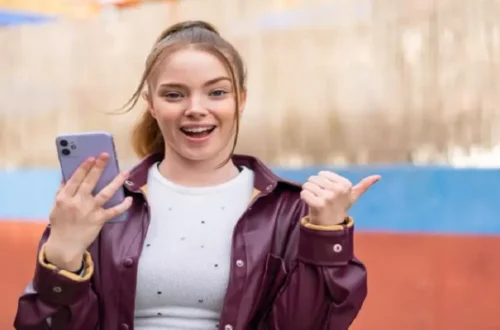Artificial intelligence (AI) is revolutionizing innovative fields, and one of its maximum interesting packages is generating pictures. Easily Create an AI Image Generator for Your Projects can remodel textual content, sketches, or ideas into practical, inventive, or summary visuals, making them valuable for diverse initiatives. Whether you’re an artist, developer, or enterprise owner, developing an AI photo generator to your particular wishes is more reachable than ever. This guide will walk you through the procedure.
Why Create an AI Image Generator?
Before diving into the “how,” allow’s explore the “why.” AI image generators are beneficial.
Marketing and Branding: Generate specific visuals for campaigns.
Game Development: Design characters, backgrounds, and property.
Artistic Exploration: Transform concepts into visual artwork.
Product Prototyping: Visualize ideas earlier than production.
Educational Tools: Create illustrations and diagrams for coaching.
Steps to Create Your AI Image Generator
Understand Your Project’s Needs
Define the purpose of your AI photograph generator.
What kind of pix do you want? (e.g., landscapes, portraits, product designs)
What input will the generator use? (e.g., text, tough sketches, existing pictures)
Having a clear purpose will assist you in choosing the right gear and technology.
Choose the Right AI Framework or Platform
There are many frameworks and platforms to simplify the advent manner.
Pre-skilled Models
DALL·E: Developed by using OpenAI, notable for the textual content-to-picture era.
Stable Diffusion: Popular for exquisite, customizable photo generation.
RunwayML: Easy to use for non-technical customers, with pre-constructed fashions.
Deep Learning Frameworks
For those with programming experience.
TensorFlow: versatile and well-supported for custom models.
PyTorch: Preferred via researchers for flexibility and simplicity of use.
Online Tools
Canva AI: user-pleasant platform for primary photo introduction.
Artbreeder: Ideal for producing artistic or fable visuals.
Gather and Prepare Your Dataset
If growing a custom AI model, you’ll need a dataset of photographs that fit your venture requirements.
Free Resources: Use public datasets like ImageNet or Kaggle.
Custom Collection: Compile photos relevant to your particular area of interest.
Data Cleaning: Ensure pictures are classified accurately and resized continuously.
Train Your AI Model
If you’re constructing a generator from scratch, observe those steps.
Choose a Model Architecture
Generative Adversarial Networks (GANs): Ideal for sensible image technology.
Variational Autoencoders (VAEs): Suitable for abstract or latent space exploration.
Diffusion Models: Excellent for producing exact and coherent images.
Set Up a Training Environment
Use a robust system with an excessive-overall-performance GPU or leverage cloud systems like Google Colab, AWS, or Azure.
Train the Model
Load the dataset into your framework.
Adjust hyperparameters (mastering fee, batch size, etc.).
Monitor overall performance with the usage of metrics like FID (Fréchet Inception Distance).
Use No-Code Platforms for Simplification
If coding isn’t your area of expertise, no-code structures like Lobe or Teachable Machine enable you to create AI fashions without technical information. These equipment frequently offer drag-and-drop interfaces for schooling and deploying fashions.
Deploy Your AI Image Generator
Once the version is trained, you need to make it reachable.
Create a Web App
Use frameworks like Flask or Django to build an interface.
Host the app on structures like Heroku or AWS.
Integrate into Existing Systems
If your AI generator is a part of a larger mission, integrate it with the use of APIs.
Tips for Optimizing Your AI Image Generator
Focus on Quality: Regularly replace the dataset and nice-tune the version.
Experiment with parameters: Adjust variables to improve output.
Add Filters or Style Options: Enhance usability by allowing users to personalize the fashion or subject of generated pictures.
Applications of AI Image Generators in Real Projects
Graphic Design
Designers use AI turbines to prototype trademarks, illustrations, and layouts.
Entertainment
Movies and video games gain from AI-created characters, props, and backgrounds.
E-commerce
Retailers make use of AI for product visualization, allowing clients to peer custom designs or configurations.
Social Media
Content creators depend on AI for enticing visuals, memes, and story factors.
Challenges and How to Overcome Them
Computational Power
Use cloud-primarily based GPUs or dispensed computing.
Data Privacy
Use anonymized datasets and ensure compliance with information guidelines.
Ethical Concerns
Avoid growing deceptive or dangerous content material, and cling to ethical tips.
Conclusion
Creating an AI photo generator tailored for your venture is no longer a technical dream—it’s a sensible fact. Whether you leverage pre-trained fashions, educate your personnel, or use no-code structures, the gear is at your fingertips. With a clear goal and the proper technique, you can harness AI to bring your creative visions to life.




